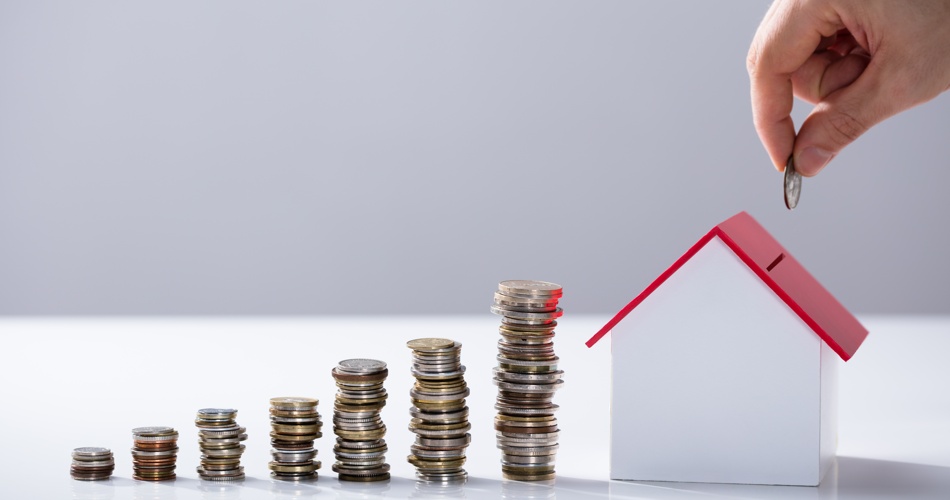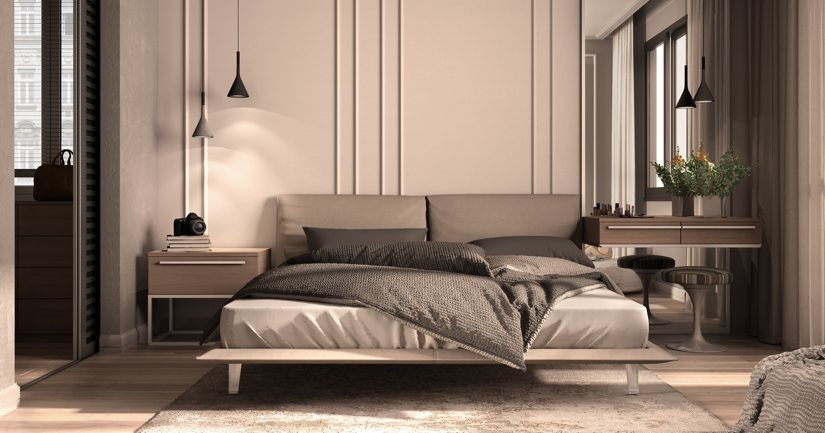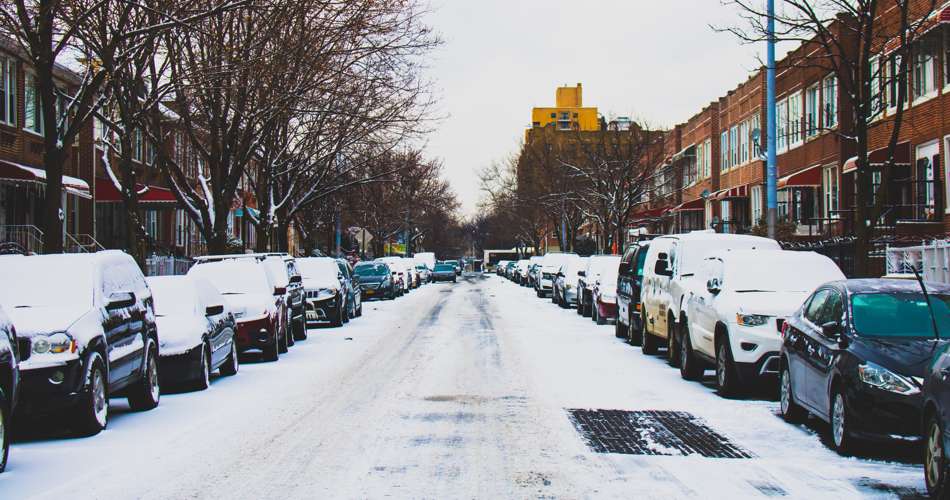Once you’ve decided to buy a home, the first order of business is to figure out how much you can afford to spend. This includes deciding on the amount you want to pay up front in the form of a down payment.
In general, down payments in Canada are a minimum of five percent of the cost of the home, although there is the incentive to put down a higher amount, which we’ll cover as well. Keep reading to learn more about your down payment options and what you need to know to get the home you want.
THE AMOUNT BORROWED MAKES A DIFFERENCE
Mortgages for homes that are $500,000 or less will almost always require a minimum five percent down payment. However, if the purchase exceeds this figure, the remaining balance will require a ten percent down payment.
For example, a $700,000 home will require a down payment of $45,000. Here’s how it’s calculated:
| $500,000 x 5 percent | $25,000 |
| $200,000 x 10 percent | $20,000 |
| TOTAL | $45,000 |
A LOWER DOWN PAYMENT = MORTGAGE LOAN INSURANCE
Another factor to consider in the mortgage process is something called mortgage loan insurance. This is an insurance premium added to loans that are less than a 20 percent down payment, and it’s in place to protect the lender in case of default on the loan. This can add up to $10,000 or more to your loan, depending on the amount you’re borrowing, but it also means you need to save just 5 percent of the purchase price for a down payment.
First, the home loan must meet the requirements of the mortgage insurance company. Then the insurer will add a premium ranging from 0.6 to 4 percent to the total sum you borrow. The good news is the mortgage insurance fee can be rolled into the amount you’re borrowing, which translates into only a slight increase in your monthly mortgage payments. Remember, though, you’ll be paying interest on that amount as well.
TIPS FOR SAVING YOUR DOWN PAYMENT
When you purchase your first home, the larger the down payment, the smaller your monthly payments will be. Besides that, if you have a down payment of 20 percent or more, you’ll be able to avoid paying a mortgage insurance premium.
It can seem daunting to save enough for a healthy down payment, but there are some solid ways you can achieve that goal.

COMPARE YOUR INCOME TO YOUR MONTHLY EXPENSES
To start, compare how much you’re earning to how much you spend. Do you have any money left over at the end of a pay period? It’s time to sit down and do an analysis of how your income gets distributed. Make sure you include all expenditures, not just bills. That means dining out, online purchases and small daily expenses, like your morning breakfast sandwich.
Once you figure out what your budget looks like and how much money you have to spare each month, you will have a better idea of what you can afford to save. Having something tangible like a monthly budget will also make it easier to be accountable and you can estimate how long it will take to save for the amount you need.
For example, if you have $500 left over each month and need $8,000 more for a down payment, you know it will take roughly 16 more months to get there.
TRACK YOUR EXPENSES IN REAL TIME
Now that you have an accurate picture of your monthly cash flow, it’s time to start tracking how much you spend in real-time to see how close it is to your budget. There are some great real-time budgeting apps out there that will do everything for you.
Just be sure and enter every expense, no matter how small, to get a fully accurate picture of what you spend each month. For cash purchases, keep a list and add to it each time you spend any cash.
SEE WHAT EXPENSES YOU CAN LIVE WITHOUT AND SAVE IT
This is the hard part, and it should include expenses both big and small. Look at the data from the work you’ve done on your budget.
Is there a little thing that adds up at the end of the month like a $4 latte every weekday? That’s $80 a month you could be saving.
Are you subscribed to all of the major streaming services so you don’t miss out? If you only use one or two most of the time, hit the pause button on the rest or cancel your subscription before it renews. A few less shows to watch could equal $50 more a month in your savings.
And just like that, two small changes could have you with around $1500 extra at the end of the year to put towards a home.
Remember, if you budget a certain amount for fun things, entertainment or eating out, you don’t have to use it all. You can always adjust your budget and the extra money you save will get you that much closer to your goal.
REDUCE DEBT WHERE YOU CAN
It only makes sense to work on reducing your debt if you’re looking to take on a monthly mortgage payment. You’re working hard to afford a home, but you also don’t want to have more financial responsibilities to worry about if you can avoid them.
So pay a little extra on your monthly car payment; get that credit card balance down. Every bit helps.
Another benefit of chipping away at your existing debt is that it will help your credit score when you’re ready to buy your new home.
SAVE ANY EXTRA MONEY YOU RECEIVE
When any extra money comes in, it should go directly into your down payment fund. Keep your eyes on the prize! Bonuses from work and tax refunds are perfect opportunities to save even more money towards your home purchase. It all adds up and will help you get there faster.

ACCEPT CASH GIFTS TOWARDS YOUR DOWN PAYMENT
If you don’t have quite enough saved up personally, there is another option to explore. A lot of parents are happy to help their children with the funds they need in order to buy their first home. You can save for a down payment using gift money from a birthday, wedding, college graduation or other life events too; however, you need to be prepared to document every penny you receive.
If a relative or friend provides you with a large cash gift to help you with your down payment, it’s likely you’ll need to contact them to fill out paperwork. Keep in mind that large gift funds intended to go towards the purchase of a home can typically only come from an immediate relative. A mortgage professional will be able to give you more information on documenting and using these funds toward a down payment.
Something else you’ll want to think about: many Canadians have relatives that reside in the United States or other parts of the world. While the process and regulations for receiving gift money are the same, you will need to allow a little extra time for the funds to clear. For example, some banks may hold transfers for up to 30 days for security purposes. If you have never received funds from outside of Canada, wait at least 90 days to confirm the funds are available before applying for a mortgage.
CONSIDER THE HOME BUYERS’ PLAN IF YOU’RE A FIRST-TIME BUYER
If you want to move into a new home right away and have funds in an RRSP, there is a way to borrow from it if the money is used for a down payment.
The Home Buyers’ Plan (HBP) allows first-time buyers to take up to $35,000 from their Registered Retirement Savings Plan (RRSP) to use toward a down payment on a new home.
It is a great program, but there are a few points worth considering before you decide to use it:
- You will have up to fifteen years to repay the loan, so if you can stick to a budget like the one you’ve already created, this should be no problem.
- If you are unable to pay back the money in this time frame, it will be taxed, leaving you owing more in income tax.
- Any money you withdraw is also money that isn’t earning interest and growing for your retirement years so if you need to borrow it, try and pay it back as soon as possible.
Note: If you add money to your RRSP as repayment of an HBP down payment loan, be sure and designate it as such. If you don’t, it will be counted as a regular contribution.

HAVE PAPERWORK FOR ALL OF YOUR ASSETS
Some home buyers will use assets like stocks and such that they want to use for their down payment. Lenders need to be able to see the big picture. If you have investments, you need to be able to show they belong to you and that you can access the funds. People who are planning on cashing out their investments will need to do so about three months before they apply for a mortgage. This ensures the funds will be transferred and cleared for use before closing.
INCREASE YOUR INCOME
In today’s market, it’s simply a fact that many people don’t take home enough money to make a significant dent into their savings. Living paycheque to paycheque is a real thing. So find yourself a side hustle or part-time job and ensure every penny of that money goes straight into your savings account. Act like you never had it and don’t put it into your budget calculations.
Another option here is to ask for a raise! When’s the last time you had a performance/wage review at work? If you don’t ask, the answer is always no. You do need to prepare for it, but if you’ve been doing strong at work and management is happy with your performance, it doesn’t hurt to take a shot.
WHAT COMES NEXT AFTER YOUR DOWN PAYMENT?
Now that you have a better idea of your down payment options in Canada, you can choose an amount that makes sense for you. Mortgage insurance is worth looking into if you don’t want to wait to buy a home, and if you don’t have enough saved yet, the tips listed above will help you get there faster.
Saving a down payment is one of the hardest parts of the home buying process. Once that’s done, the fun can begin as you start shopping for a home. Where will you live? Do you want a resale or a new home build? It’s time to narrow down your options and get pre-approved for the one you really want!
Originally posted Dec 19, 2017; updated Feb 17, 2023








0 Comments